Ticks might feel like a modern annoyance — especially given that Lyme disease was only recognized about 40 years ago — but these parasites have existed since prehistoric times. In 2017, scientists reported finding ticks entombed in amber pieces from Myanmar dating back 99 million years.1
About 850 tick species exist worldwide. Luckily, fewer than 60 are confirmed to bite humans and transmit disease, according to the Mayo Clinic. Depending on the geographic region, peak tick season typically falls between mid-March and May, and again from mid-August through November. However, as tick populations swell, their bites and potential for transmitting disease have increased.
“Some of the suspected causes (for population increases) are climate change, habitat encroachment, transport of cattle and pets, etc.,” says Phurchhoki Sherpa, coordinator for the Purdue Public Health Medical Entomology Program. “The natural world is complicated; multiple variables are intertwined, and it is difficult to parse through and identify specific individual factors.”
Farrier Takeaways
- Check yourself for ticks at the end of each workday. Finding and removing ticks early can help limit the potential for a serious infection.
- The Environmental Protection Agency (EPA) approved repellents that provide a line of defense against ticks.
- Note a tick bite on your calendar or in your phone so that if symptoms appear you can share this information with your doctor.
People might unknowingly transport the hitchhiking pests on pets and cattle from tick-endemic areas to new places. For example, the Asian Longhorned Tick that’s native to East Asia appeared in New Jersey in 2017 and has since spread to multiple eastern states.
Since horses are a popular host for growing tick populations, farriers have an increased risk of coming into contact with ticks. Here’s what you need to know to reduce your exposure, lessen your risk for a tick-borne disease, and how when bitten.
Tick Prevention Strategies
Horses, especially those turned out in grassy, bushy, or wooded areas, are common hosts for ticks. Even mowed pastures can’t eliminate the chances that a tick is on a horse, although stalled show or racehorses may be an exception to the rule. How you dress for the day can be your best line of defense.
“Tuck pants into socks and tuck shirts into pants,” Sherpa advises. “Wear light-colored clothing and long sleeve shirts for easy detection of ticks if they are on you. Also, use insect repellents with EPA-registered active ingredients such as DEET, picaridin, IR 3535, and oil of lemon eucalyptus.”
LEARN MORE ONLINE
Gain insight on ticks and tick-borne diseases by visiting online extras at AmericanFarriers.com/0323
Other EPA-registered insect-repellent ingredients include para-menthane-diol (PMD) or 2-undecanone. As with using any pesticide, follow the application instructions printed on the label. In addition to applying a tick repellent to yourself, the Center for Disease Control (CDC) suggests wearing clothing and boots treated with 0.5% permethrin. Pre-treated items are available for purchase, or you can treat your gear with a spray.2
“When it comes to ticks and avoiding tick-borne diseases, anything is better than nothing,” Sherpa adds. “We are focused on minimizing the risk, so always do a tick-check after a suspected contact with ticks or animals with ticks.”
Tick Bite, Now What?
Bee stings and insect bites typically cause instant discomfort. While you may feel some tick bites, that is not always the case. More commonly, you’ll simply find a tick wandering on or attached to your skin. When you find one embedded, you’ll want to remove it carefully to avoid breaking the head from the body and leaving a portion of the tick behind.
“Use a fine-tipped tweezer to grasp the embedded tick as close to the skin as possible, then slowly pull the tick straight up,” Sherpa says. “Do not twist the tick, as that might increase the damage to the bite site.”
Twisting or jerking the tick can cause the mouth parts to break off from the body and remain in the skin. In this case, use tweezers to remove these, as well. If this can’t be done easily, the CDC recommends leaving them in place and allowing the skin to heal. Then wash your hands and the bite site thoroughly with soap and water or with rubbing alcohol.
Sherpa suggests keeping a small bag filled with fine-tipped tweezers and rubbing alcohol in your work truck. Tick removal kits sell for as little as $5 and up to $20. Local conservation and health departments also offer them free at county and state fairs.
The CDC cautions against old wives’ tales that recommend applying heat, nail polish, or petroleum jelly to the tick and waiting for it to detach from the skin. Prompt removal is crucial.
“Tick”-ing Time Bomb?
Different ticks transmit different diseases, so it is important to know the types of ticks that are prevalent in your area. Tick disease can transfer in as little as 2 hours or as long as 8 days. Lyme disease typically takes 24-48 hours. If you find a biting or embedded tick, use a Sharpie to draw a quarter-shaped ring around the bite site to monitor changes that may prompt a call to the doctor.
“Keep an eye on signs and symptoms for diseases associated with those ticks,” Sherpa says, “especially after being bit by one or after being in a possible tick habitat, and seek medical help as needed.”
Common symptoms include:
- A red rash in a bull’s eye shape at the bite site.
- Headaches and achiness.
- Fever.
- Joint pain.
- Fatigue.
- Neck stiffness.
- Nausea or diarrhea.
- Numbness or tingling sensation.
“It also helps farriers to know how to recognize signs and symptoms of tick-borne diseases in horses,” Sherpa says. “The Penn State Extension offers a free recorded webinar that delves into fundamentals of tick-borne diseases in horses and recommendations for prevention and control of ticks including repellents for equine friends.”
She also recommends resources provided by the University of Minnesota Extension and Purdue University Veterinary School with most state extension services, which offer similar resources.
Tick populations are anticipated to continue rising as milder winter conditions become more common. While it’s impossible to avoid ticks altogether, taking precautions can help you quickly identify and respond to a tick bite to minimize the risk of infection.
References
- Ancient ticks engorged with dinosaur blood are found trapped in amber. South China Morning Post Dec. 13, 2017. Accessed Feb. 2, 2023; scmp.com/news/world/article/2124078/ancient-ticks-engorged-dinosaur-blood-are-found-trapped-amber
- Preventing tick bites | Ticks | CDC. Accessed Feb. 2, 2023.
Where Do Ticks Live?
The Center for Disease Control (CDC) website offers a comprehensive list and maps showing where ticks live. This is a snapshot of medically important human-biting ticks as listed on the CDC website. For detailed information visit cdc.gov/ticks.
Tick Species
American dog tick
(Dermacentor variabilis, D. similis)
Images: CDC.gov
Location: Prevalent in regions east of the Rocky Mountains with limited populations along California’s Pacific Coast. The newly discovered D. similis has appeared west of the Rockies, but less is known about the disease transmission of this species.
Disease risk: Tularemia and Rocky Mountain spotted fever.
Blacklegged tick
(Ixodes scapularis)
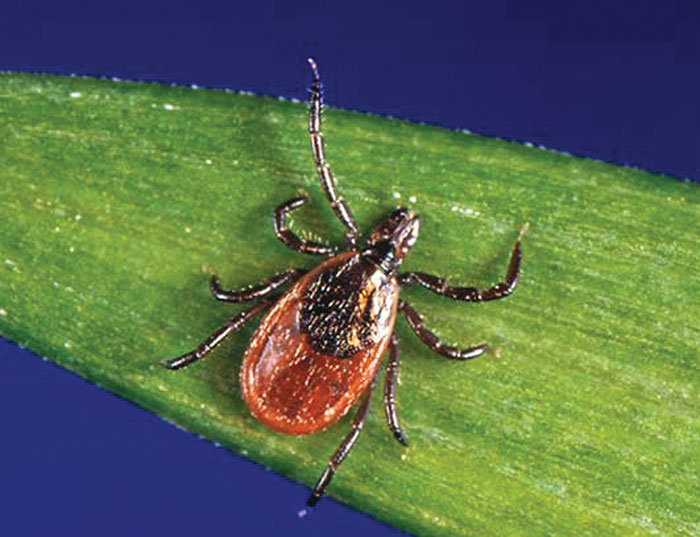
Location: Widespread throughout the eastern United States.
Disease risk: Lyme disease, anaplasmosis, hard tick relapsing fever, ehrlichiosis, babesiosis, Powassan virus disease.
Brown dog tick
(Rhipicephalus sanguineus)
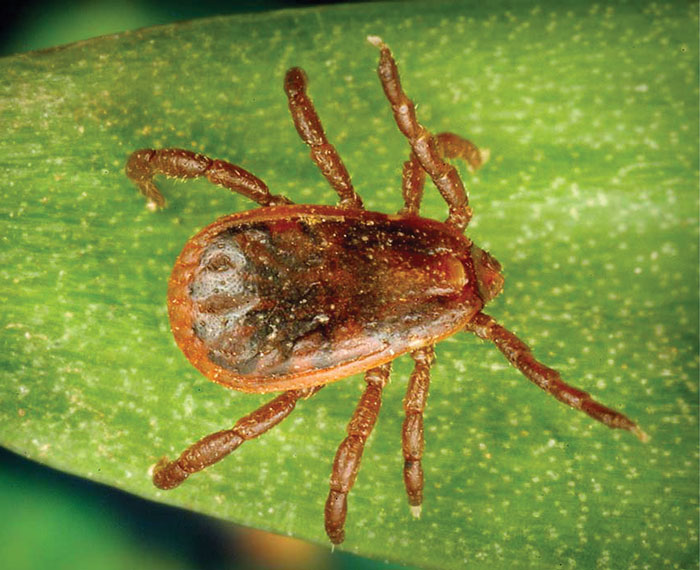
Location: Worldwide. Most commonly bites dogs, but may also bite humans and other mammals in the southwestern U.S. and along the Mexican border.
Disease risk: Rocky Mountain spotted fever.
Gulf Coast tick
(Amblyomma maculatum)
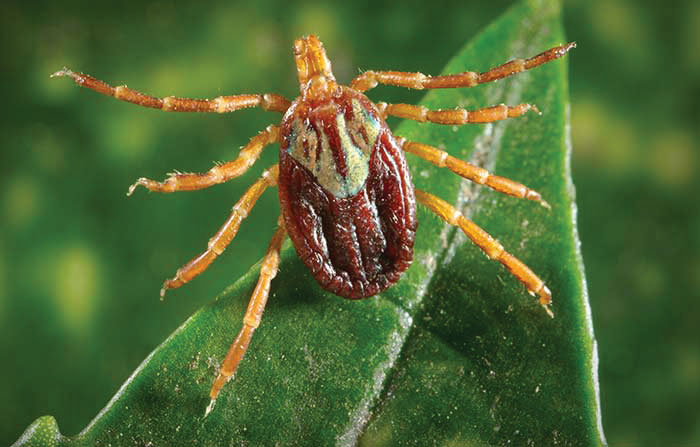
Location: U.S. coastal regions along the Atlantic and Gulf of Mexico.
Disease risk: A form of spotted fever known as rickettsia parkeri rickettsiosis.
Lone star tick
(Amblyomma americanum)
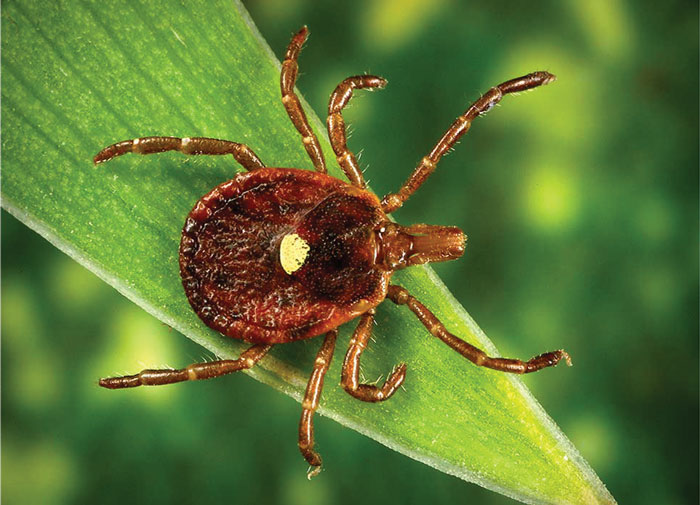
Location: Prevalent in the eastern, southeastern, and south-central U.S.
Disease risk: Bourbon virus, ehrlichiosis, Heartland virus, tularemia, and STARI. Emerging research also suggests Lone star ticks cause a red meat allergy, although other tick species have not been excluded.
Rocky Mountain wood tick
(Dermacentor andersoni)
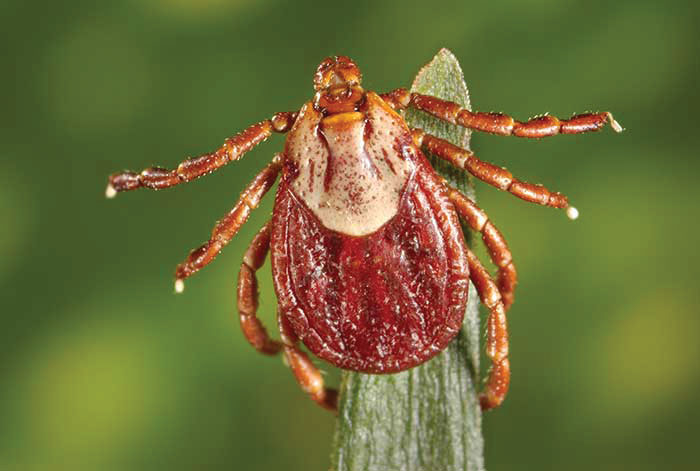
Location: Throughout the Rocky Mountain region of the U.S.
Disease risk: Rocky Mountain spotted fever, Colorado tick fever, tularemia.
Western blacklegged tick
(Ixodes pacificus)
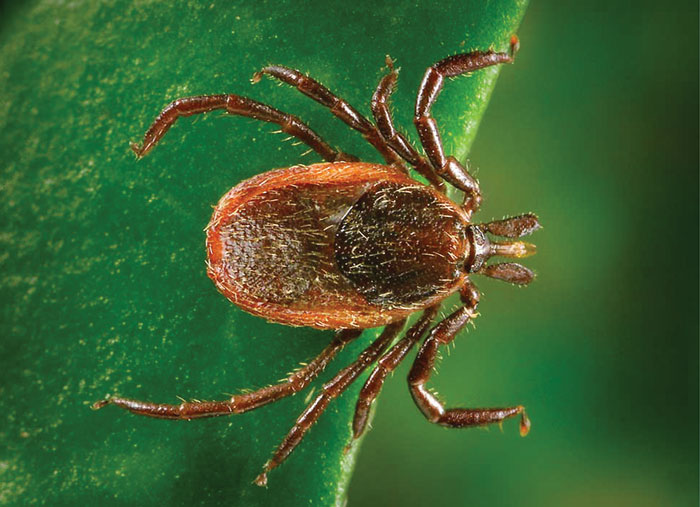
Location: Widespread along the U.S. Pacific Coast, with some populations in southern Nevada, and into Utah.
Disease risk: Anaplasmosis, Lyme disease, hard tick relapsing fever.


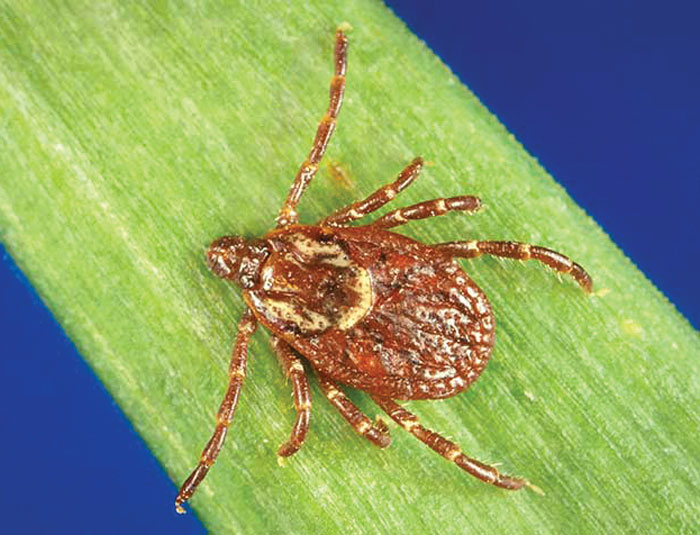







Post a comment
Report Abusive Comment